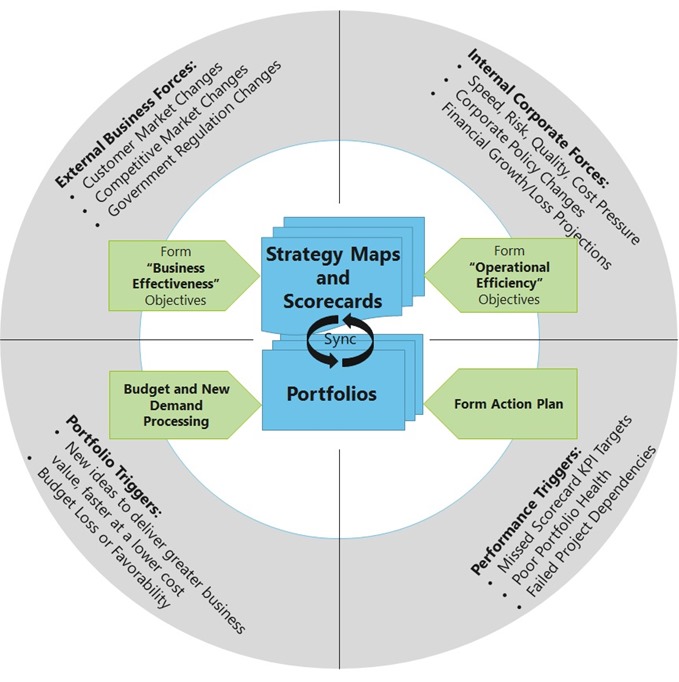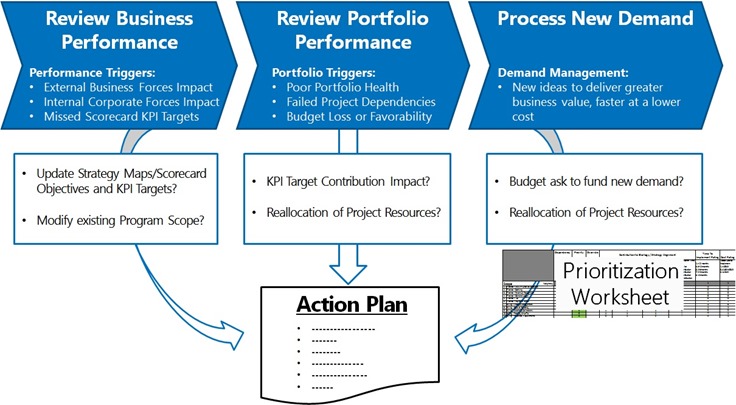Business Performance Management, the next big thing…again
We all possess the gene to want to solve problems when faced with them. It’s human nature. People form organizations and this gene sometimes manifests itself in organizational titles and roles invented to address organizational challenges. This is natural too. For example, when support organizations face the challenge of aligning to business organizations, we see them create new job titles like Business Architect or Enterprise Architect. When business organizations face challenges to influence support organizations to align to their business strategy, we see them create new titles like Operations Manager, or Development Operations Manager or Systems Support Manager. These are strong signals that organizations are investing to improve alignment, which is great however without a common process model for these titles to engage in, progress is limited.
Enter the Business Performance Management (BPM) process. BPM is a process designed to bring alignment across all organizations in a company, regardless of size, in terms of business strategy and project portfolios. For this reason, I believe BPM is one of the most important processes out there for folks interested in achieving ‘alignment’. Interestingly, I come across many people unfamiliar with Business Performance Management so I thought I’d take the opportunity to provide an overview of BPM and help bridge some gaps.
Let’s start with a definition. Wikipedia’s current definition is a good place to start (see here); “Business performance management is a set of management and analytic processes that enable the management of an organization's performance to achieve one or more pre-selected goals. Business performance management has three main activities:
- selection of goals
- consolidation of measurement information relevant to an organization’s progress against these goals, and
- interventions made by managers in light of this information with a view to improving future performance against these goals.
… balanced scorecard is often used as the basis for business performance management activity with organizations.”
To execute a world-class implementation of BPM that resonates with business organizations and support organizations, that isn’t too complex, that can directly manage project portfolios, and resonates with people, we need to be a bit more specific. Here’s a diagram I’ve used to describe BPM in a bit more detail.
The key takeaway message of my diagram above is that BPM is a synchronization mechanism between business strategies and portfolios across a company. BPM processes deliberately ensure the business strategy reflects what business success looks like and is responsive to market forces and internal forces (by the way, “forces” refers to concepts from PESTEL and Michael Porter’s 5-forces model.) BPM processes also ensure project portfolios are responsive to business strategy changes as well as are optimizing portfolio delivery health.
It’s no coincidence that Business Strategy Management and Portfolio Management processes directly relate to BPM. Business Strategy relies on execution through projects because projects equate to strategy execution. Portfolio Management require objectives to be reached, hence the need to tie project achievement to business objectives. BPM ties these two together.
Now, imagine having implemented BPM processes in your organization, the perfect planning meeting staffed by the organization’s leadership might have the following agenda:
- Review Business Performance. The chair of the meeting would pull up their handy-dandy organizational scorecard and review any changes in their scorecard as a result of market changes or changes in measures of success for their internal stakeholders. Then, manage-by-exception by reviewing any missed targets. The results of this review would result in adding line items to the meeting’s Action Plan normally related to updating business objectives or KPI Targets and/or shifting project scope to ensure execution adopts these changes.
- Review Portfolio Performance. The chair of the meeting would then pull up their project portfolio health report to take note of any in-flight projects that have missed their targets in terms of on-time projections, on-budget projections, delivery quality, or risk. The discussion would also include a scan of any downstream dependency projects that have failed and impact their project’s ability to deliver. And finally, the meeting attendees would discuss any budget loss or favorability changes to drive a conversation of what to cut or fund as a result. The results of this review would be adding line items to the meeting’s Action Plan related to changes in the project portfolio.
- Process New Demand. To ensure continuous improvement, the last agenda item of the meeting would be to process new project proposals that promise to deliver greater business value, faster and at a lower cost than the current funded projects. The chair of the meeting would review new business cases per their demand management process and if any new project proposal is approved, the portfolio is reshuffled and the Action Plan is updated.
Here’s a diagram I’ve used to describe such a planning meeting.
The outcome of such a meeting is an up-to-date business strategy connected to all relevant support organizations with optimized project portfolios to achieve it. That’s business performance management.

